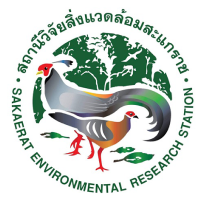Keywords :
Carbon Stable Isotope Ratio; Food Provision; Fungus-growing Termite; Lignin Degradation;
Termitomyces
บทคัดย่อ :
1.To investigate whether the role of symbiotic fungi in lignin degradation and foodprovision differs among fungus-growing termites (four species of Macrotermes, threespecies of
Odontotermes, Hypotermes makhamensis, Ancistrotermes pakistanicus and Pseudacanthotermes militaris), the chemical composition of fungus combs of different ages and the chitinolytic activity in the gut of termites were analysed. In addition, the carbon stable isotope ratios ((Delta)13C) in old combs, worker termite tissues and fungal nodules (aggregated conidia) were compared.
2. In Macrotermes spp., the carbohydrate : lignin ratio of the combs increased with increased comb age, but it decreased or remained the same in Odontotermes spp., H. makhamensis, A. pakistanicus and P. militaris. In contrast, the chitin : carbohydrate ratio and ash content increased more over time in the combs of Odontotermes spp., H. makhamensis, A. pakistanicus and P. militaris than in the combs of Macrotermes spp.
3. Chitinolytic activity in the gut of workers was higher in O. takensis, H. makhamensis and A. pakistanicus than in M. annandalei.
4. In all species examined, the(Delta) 13 C value increased in the sequence: old combs < termites < fungal nodules. Based on a two-source model of (Delta)13 C, the contribution of fungi to termite nutrition was considered higher in Odontotermes spp., H. makhamensis, A. pakistanicus and P. militaris than in Macrotermes spp.
5. These results suggest that symbiotic fungi play different roles among fungus-growing termites. In Macrotermes spp., the main role of symbiotic fungi is to degrade lignin, so
that the termites can utilize cellulose more efficiently, whereas in Odontotermes spp., H. makhamensis, A. pakistanicus and P. militaris , it is to serve as a food source.
เอกสารอ้างอิง :
Hyodo, F., Tayasu, I., Inoue, T., Azuma, J. I., Kudo, T., & Abe, T. (2003). Differential role of symbiotic fungi in lignin degradation and food provision for fungus-growing termites (Macrotermitinae: Isoptera). Functional Ecology, 17(2), 186-193.



